If you own a cat, you know many are anything but quiet. Cats meow at you for any reason, and some constantly chatter throughout the day. While feral cats may look like regular cats, they behave differently. Feral cats can meow, but they rarely do it. There’s just no point; meowing can expose them to danger in the wild.
Keep reading for a closer look at why feral cats don’t meow and what you can do if you encounter one.
Why Do Cats Meow?
Cats get a bad rap for being aloof, but they developed a language just for communicating with humans. Kittens meow at their mothers to let them know they’re hungry or uncomfortable, but they outgrow it when they get older.
According to the ASPCA, adult cats don’t meow at each other but only at people1. Therefore, it makes sense that feral cats don’t meow. Since they live in the wild and are not exposed to humans, they don’t need to meow to communicate their needs. In fact, meowing can be dangerous in the wild; it exposes their location to predators and competing feral colonies.
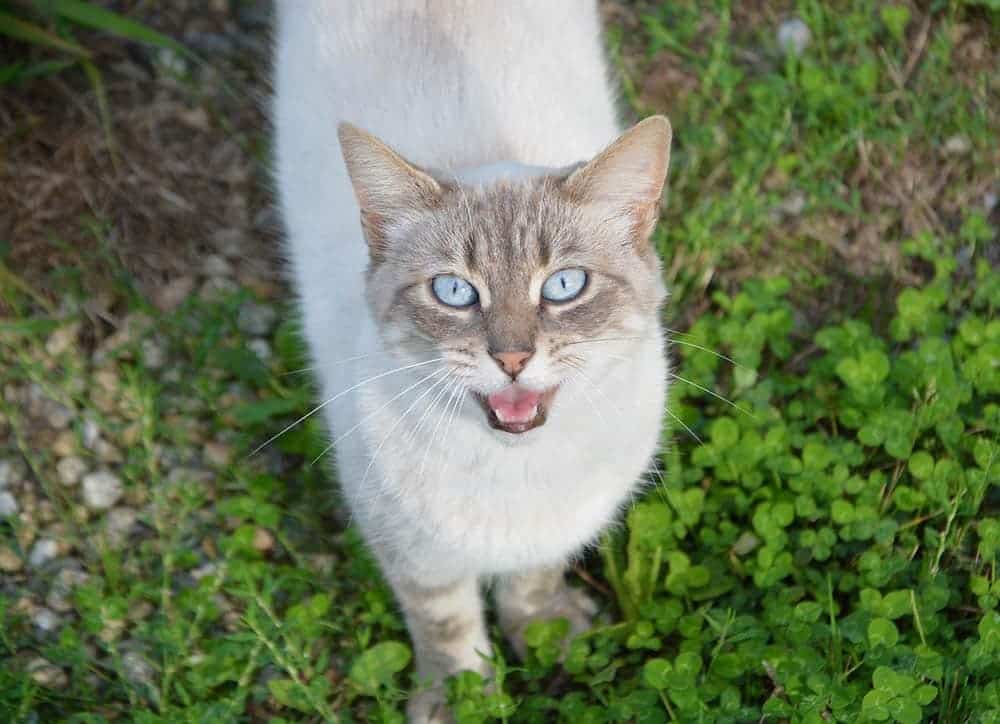
 How Feral Cats Communicate Without Meowing
How Feral Cats Communicate Without Meowing
Given their limited use of meowing, feral cats rely on other forms of communication to express themselves and interact with other cats. These methods include:
1. Body Language
One of the most crucial aspects of feral cat communication is body language. A cat’s posture, tail movement, and ear positioning can all provide insight into their mood, intentions, or comfort level.
For example, an arched back with fur standing on end may indicate fear or aggression, while a slow, languid tail flick could signify relaxation or contentment. Ears pricked forward show curiosity or interest, while flattened ears signal fear, anger, or submission.
By observing these physical cues, feral cats can effectively communicate with each other and gauge the temperament of other cats in their vicinity.
2. Scent Marking
Feral cats also rely on scent marking as a means of communication. Cats have scent glands in their cheeks, paws, and other areas of their body that secrete pheromones. The scent markers help cats establish and maintain territory, convey social status, and signal reproductive readiness.
That’s why feral cats often rub their faces or bodies against objects like trees, fence posts, or rocks to leave their scent behind. In this way, feral cats can convey information about themselves without direct confrontation or contact.
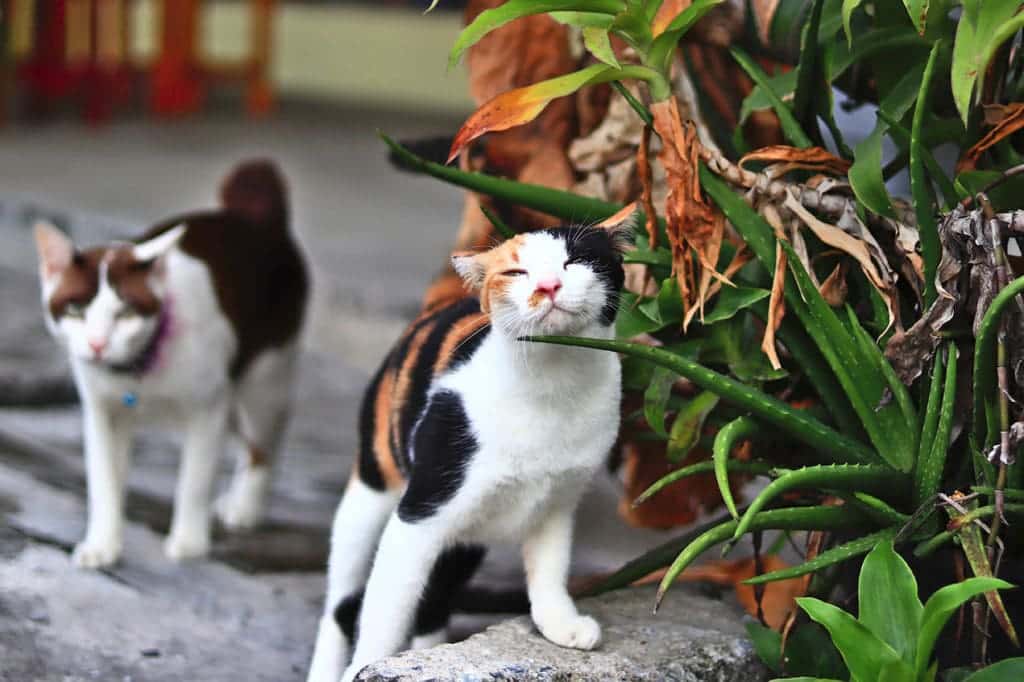
3. Other Vocalizations
While meowing is not a primary form of communication for feral cats, they utilize other vocalizations to communicate. These sounds include growling, hissing, yowling, and purring.
Growling and hissing often express aggression or fear, warning other cats to stay away or back down. Yowling, a loud, drawn-out vocalization, can signal a variety of emotions, from pain or distress to a mating call.
Purring, though often associated with contentment and affection in domesticated cats, can also be a sign of submission or an attempt to communicate reassurance in feral cats.
 So Why Did a Feral Cat Meow at Me?
So Why Did a Feral Cat Meow at Me?
That was probably a stray cat. Feral cats will flee the moment they see humans, and it’s unlikely for one to approach close enough to meow at you.
Strays are domesticated cats that have been abandoned or grew up without owners but near people. So, they already know that meowing works, and they’ll naturally do it when they want to get a person’s attention.
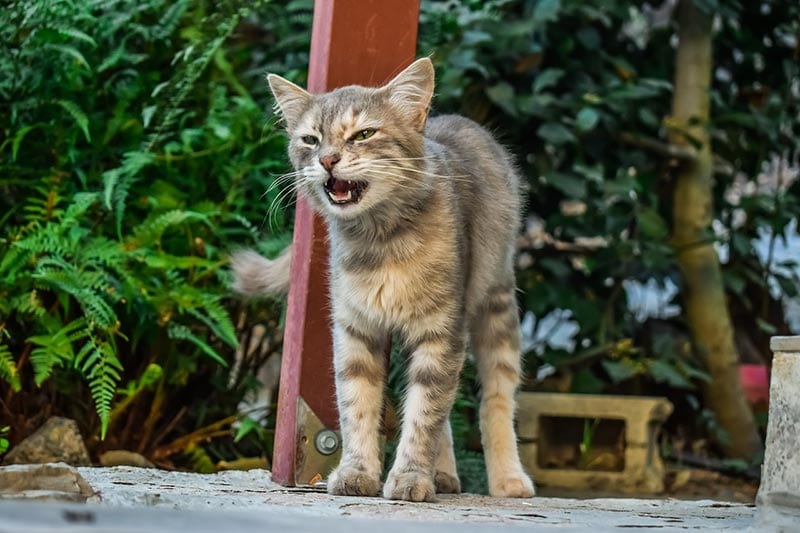
Conclusion
To sum it up, feral cats do not meow as frequently or expressively as domestic or stray cats—if at all. Instead, they rely on non-verbal methods like scent marking and body language to communicate with fellow ferals. If a feral meows at you, they’re likely a stray, not a feral cat.
Featured Image Credit: museumsmaus, Pixabay

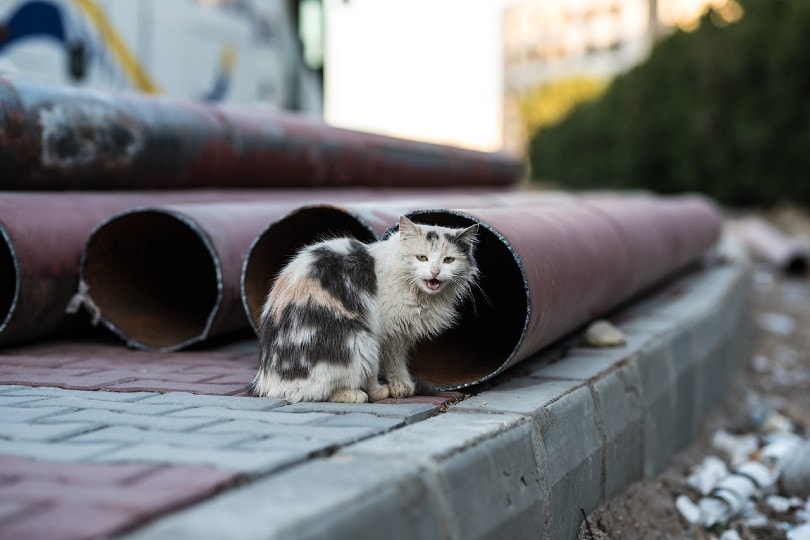
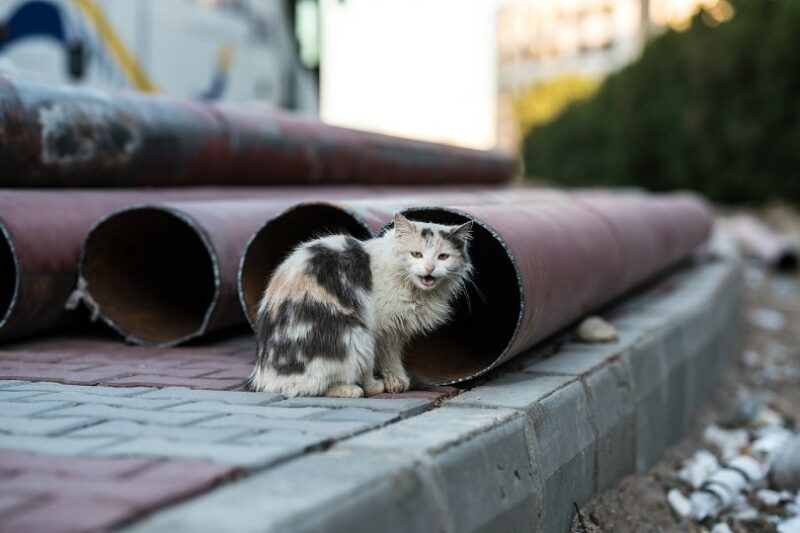

 How Feral Cats Communicate Without Meowing
How Feral Cats Communicate Without Meowing So Why Did a Feral Cat Meow at Me?
So Why Did a Feral Cat Meow at Me?






